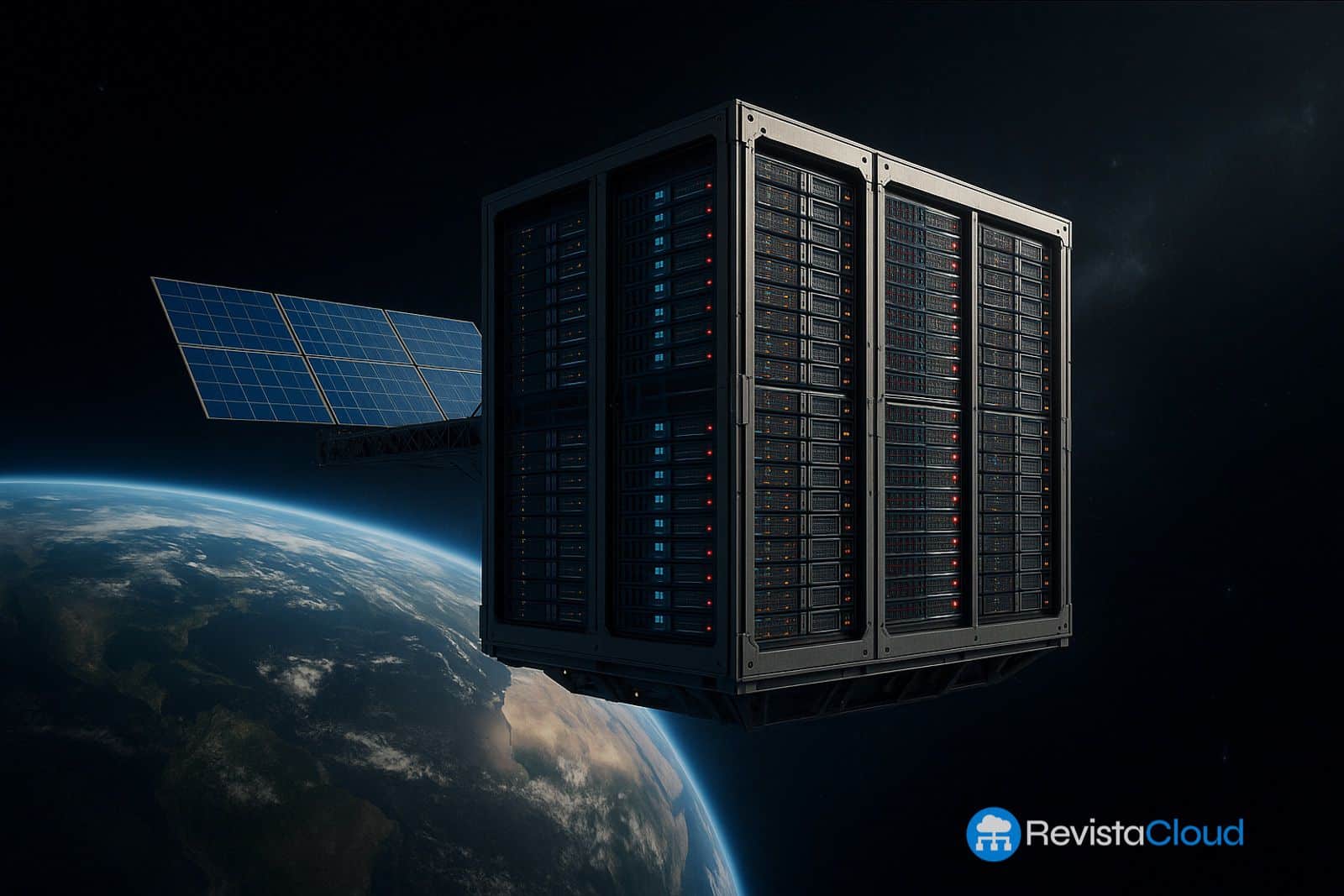The former CEO of Google and current head of Relativity Space proposes deploying solar-powered orbital data centers to mitigate the energy collapse caused by generative artificial intelligence.
Generative artificial intelligence has brought about an unprecedented digital revolution, but it also comes with an energy bill that threatens to become unsustainable. In light of this scenario, Eric Schmidt, former CEO of Google, has put forward a proposal as ambitious as it is futuristic: to send AI data centers into space, where they would operate on solar energy and relieve Earth of part of its growing energy demand.
From his new position at the aerospace company Relativity Space, Schmidt has confirmed his plans to create orbital infrastructures capable of housing high-performance servers away from the planet. An idea that, while it may seem like science fiction, is increasingly difficult to ignore.
The energy consumption of AI is skyrocketing
Current artificial intelligence models, such as large language models (LLMs), require thousands of GPUs working 24/7. This not only demands colossal infrastructures but also energy in amounts comparable to entire countries.
During a recent appearance before the U.S. Congress, Schmidt warned that:
- A typical nuclear power plant generates 1 gigawatt of power.
- Some developing data centers require up to 10 gigawatts, ten times more.
- By 2030, AI data centers could consume up to 67 gigawatts additional compared to current levels.
“We are talking about industrial infrastructures like never before seen,” noted Schmidt.
Orbital data centers: reality or madness?
The former Google leader’s proposal is to take advantage of low Earth orbit to set up floating data centers, powered directly by solar energy without depending on terrestrial power grids.
The company Relativity Space, which he now leads, is developing the Terran R, a partially reusable rocket capable of placing up to 33,500 kg of payload into orbit. This vehicle, manufactured with 3D printers, would be responsible for deploying these orbital structures.
Moreover, the space environment offers a thermal advantage: passive cooling from the vacuum and absence of atmosphere would facilitate heat dissipation, one of the significant challenges for current servers.
Precedents: a data center on the Moon
The idea is not completely new. In 2023, the startup Lonestar proposed sending a mini data center of 1 kg and 16 TB to the Moon as an experiment. However, the scale that Schmidt proposes is infinitely greater.
What makes his proposal especially relevant is that it is no longer just an experiment but an industrial necessity, according to him. With each new AI model surpassing the previous one, the demand for energy and computing grows. And Earth simply cannot keep up.
Unresolved issues?
While the plan sounds promising, it is not without its challenges:
- 💰 High economic cost: putting a data center in orbit remains very expensive.
- 🛰️ Maintenance and upgrades: systems in space are not easy to repair or upgrade.
- 🌐 Latency and connectivity: response times can be an obstacle for some AI applications.
- ☢️ Protection against radiation and failures: servers would need to be shielded from the space environment.
Despite all of this, Schmidt believes it is the only viable long-term solution to the energy crisis caused by AI. In his vision, orbital data centers could even serve as backups for critical infrastructures in the event of massive failures on Earth.
A strategic move?
Schmidt’s leadership at Relativity Space also has political and strategic implications. At a time when giants like SpaceX and Blue Origin are increasingly influenced by their founders and relationships with power, Relativity positions itself as an independent alternative with a purely technological focus.
For Schmidt, launching data centers into space would not only resolve a technical problem but also ensure technological and energy sovereignty in the face of potential geopolitical tensions.
The rise of artificial intelligence has brought promises… and threats. Eric Schmidt, who previously spearheaded a digital revolution at Google, now wants to reinvent technological infrastructure from low Earth orbit. His plan to send AI data centers into space may seem utopian, but if Earth cannot sustain the future of artificial intelligence, perhaps that future needs to be built beyond our planetary boundaries.
Are we witnessing the dawn of a new technological space age? Or is this a desperate move driven by an impending energy collapse?

